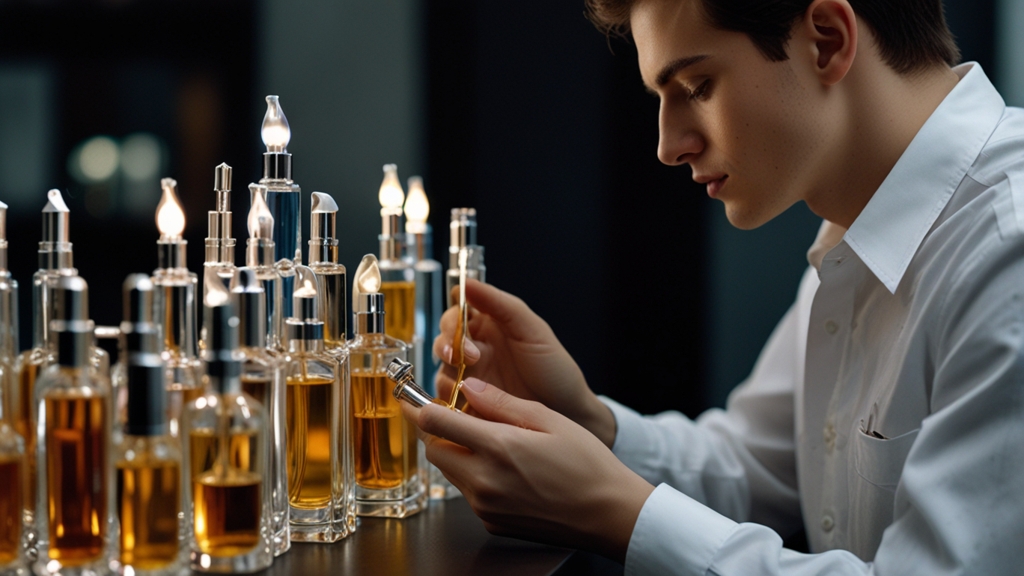The Chemistry Behind Your Favorite Perfumes: Scents and Sensibility
Perfumes have been a part of human culture for centuries, enchanting our senses and evoking memories. But have you ever wondered about the chemistry behind these alluring scents? Let’s delve into the fascinating world of fragrance chemistry and understand the components that create your favorite perfumes.
The Basics of Fragrance Chemistry
At the heart of every perfume lies a blend of essential oils, aroma compounds, solvents, and fixatives. These ingredients work together to create intricate scent profiles. Each perfume consists of three main layers, known as notes:
- Top Notes: The initial impression of the fragrance which lasts for 5-15 minutes after application.
- Heart Notes: These form the core of the fragrance, emerging after the top notes evaporate and lasting for 20-60 minutes.
- Base Notes: The final layer that lingers for hours, providing depth and solidity to the perfume.
Role of Essential Oils and Aroma Compounds
Essential oils, extracted from plants and flowers, are key to creating unique scents. Common examples include lavender, rose, and jasmine. Meanwhile, synthetic aroma compounds are lab-created substances that mimic natural scents or introduce entirely new aromas. These compounds are crucial for the consistency and longevity of modern perfumes.
"The combination of natural essential oils and synthetic aroma compounds allows perfumers to craft complex and captivating fragrances."
The Science of Solvents and Fixatives
Perfumes need carriers to dissolve the aroma compounds, which is where solvents like ethanol come into play. Ethanol efficiently dissolves both essential oils and synthetic compounds, ensuring an even distribution of scent when applied.
Fixatives, on the other hand, slow down the evaporation rate of the volatile aroma compounds, allowing the fragrance to last longer on the skin. Common fixatives include substances like benzoin resin, musk, and ambergris.
Understanding Aromatic Families
Perfumes are often categorized into aromatic families based on their dominant scent characteristics. These families include:
- Floral: Dominated by floral notes like rose, lily, and jasmine.
- Woody: Characterized by warm and earthy scents such as sandalwood and cedarwood.
- Oriental: Often rich and spicy, with notes of vanilla, musk, and exotic spices.
- Fresh: Bright and crisp, featuring citrus, green, and aquatic notes.
"Categorizing perfumes into aromatic families helps consumers find scents that suit their personal preferences."
The Art of Blending
The creation of a perfume is both an art and a science. Perfumers, or 'noses,' meticulously blend various essential oils and aroma compounds to achieve the desired fragrance profile. This process involves extensive experimentation, as even a slight alteration in the blend can drastically change the scent.
Advanced analytical techniques like gas chromatography are used to analyze the chemical composition of essential oils and aroma compounds. This scientific approach ensures the consistency and quality of the final product.
Sensibility towards Sustainability
As consumers become more environmentally conscious, the perfume industry is shifting towards sustainable practices. This includes sourcing natural ingredients responsibly, reducing the use of harmful chemicals, and opting for eco-friendly packaging. Innovations in biotechnology are also paving the way for sustainable aroma compounds, offering a greener alternative without compromising on quality.
"The future of perfumery lies in balancing the enchantment of fragrance with sustainable and ethical practices."
Conclusion
The chemistry behind your favorite perfumes is a delicate balance of science and art. From the intricate layering of notes to the precise blending of natural and synthetic compounds, every aspect plays a crucial role in creating a captivating scent. As the industry evolves towards sustainability, we can look forward to enjoying our beloved fragrances with a clearer conscience. So the next time you spritz on your favorite perfume, take a moment to appreciate the complex chemistry working behind the scenes.










